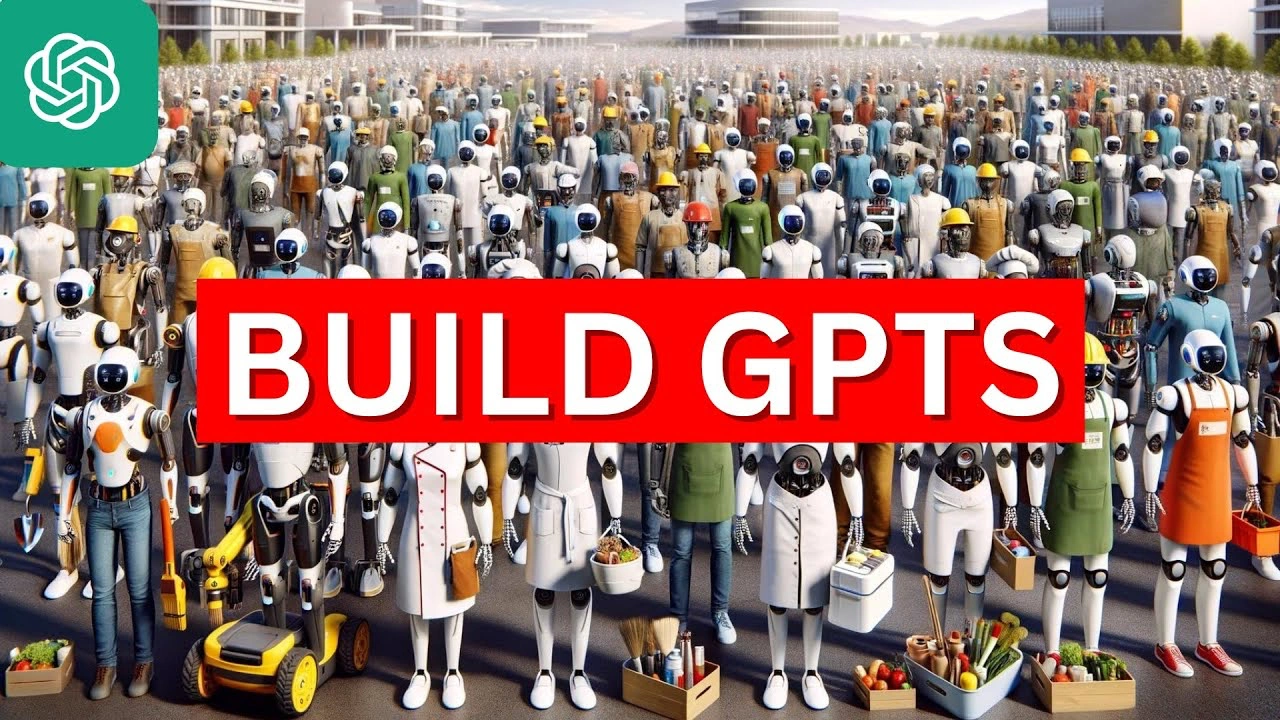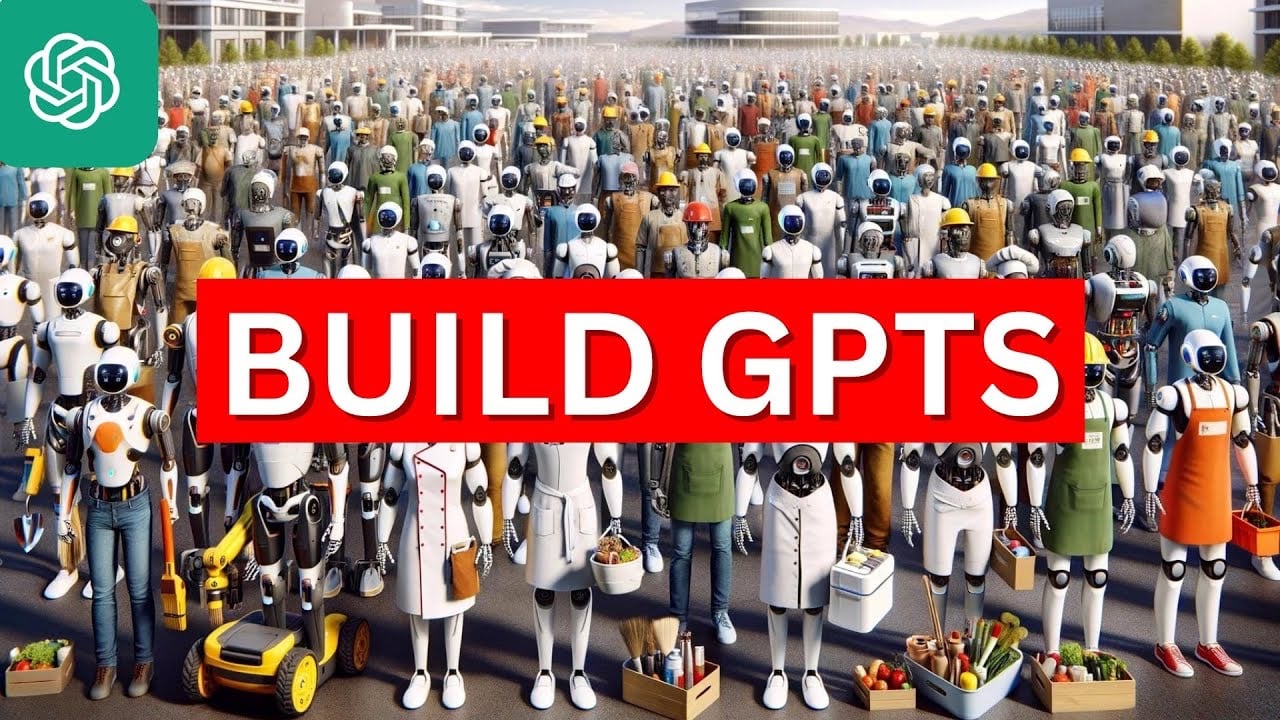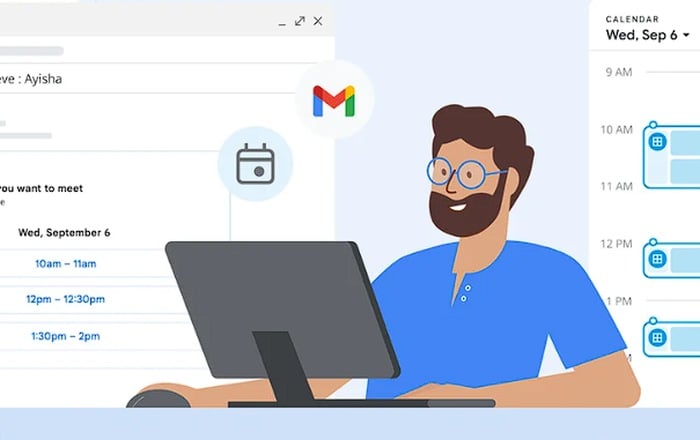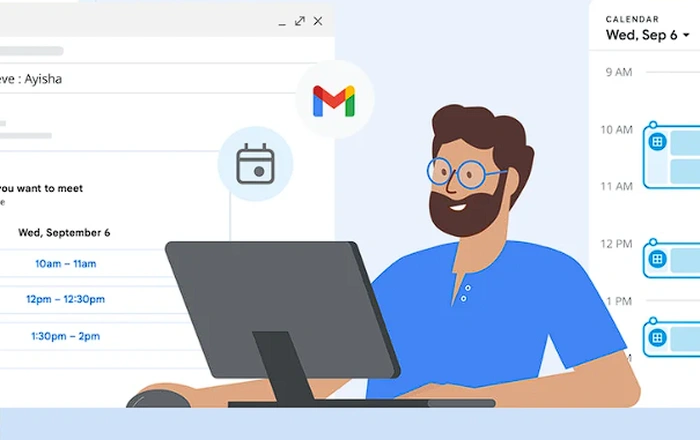
This guide will show you how to easily create custom GPTs with ChatGPT. In an era where artificial intelligence is revolutionizing the way we interact with technology, ChatGPT emerges as a game-changer with its latest update. This innovative feature allows users, especially those with Chat GPT Plus accounts, to craft custom GPTs within the Chat GPT interface. Whether you’re a tech enthusiast, a content creator, or a business professional, understanding how to leverage this update can significantly enhance your digital experience.
New Interface and Custom GPT Creation
The latest update to Chat GPT introduces a groundbreaking, user-friendly interface, revolutionizing the way we create custom GPTs. This significant enhancement not only elevates Chat GPT’s versatility but also widens its appeal and accessibility to an even larger audience. The video guides viewers through the intricacies of this new interface. She focuses on demonstrating its straightforward nature and effectiveness, ensuring that even those new to technology can navigate it with ease. By highlighting the interface’s intuitive design and efficiency, Darra provides a comprehensive understanding of its capabilities, making the journey into custom GPT creation smoother and more approachable for all users.
Accessing Custom GPTs
With the recent update, accessing and creating custom GPTs has become remarkably convenient, almost as if they are just a fingertip away. The enhanced Chat GPT interface allows users to seamlessly navigate through a well-organized sidebar, where they can both access existing custom GPTs and embark on the creation of new, personalized tools. This feature opens a gateway to a vast universe of potential, where users can explore and benefit from GPTs crafted by others. Such exploration not only provides a rich source of inspiration but also introduces a variety of applications and ideas, broadening the horizon for all users in terms of what can be achieved with custom GPTs.
Benefits for Users and Creators
The ability to customize GPTs brings with it tailored solutions to an array of specific tasks or challenges, significantly amplifying their practicality and relevance in various scenarios. For creators, this update serves as a lucrative avenue, unlocking the potential for substantial passive income through the GPT store. Moreover, it provides an effective strategy for driving traffic to their websites and digital platforms, thereby enhancing their online presence and reach. This dual benefit of practicality for general users and financial opportunity for creators marks a pivotal advancement in the utility of Chat GPT.
Step-by-Step Creation Guide
The video above is an invaluable resource for those venturing into the realm of custom GPT creation. It meticulously outlines a detailed, step-by-step process that spans the entire creation journey. Starting from the initial phase of selecting a specific purpose for the GPT, to the more nuanced stages of setting the tone, naming, and configuring conversation starters and responses, the guide ensures that every aspect of the creation process is covered. This thorough approach not only aids in a smoother creation process but also empowers users to build GPTs that are finely tuned to their specific needs and preferences.
Common Mistakes to Avoid
Every innovation comes with its learning curve, and the creation of custom GPTs is no exception. The video identifies and discusses common pitfalls that users might encounter, such as the temptation to create overly complex GPTs at the outset, the oversight of not backing up instructions, and the nuances of sharing methods that may not be as effective as intended. By being aware of and avoiding these mistakes, users can save valuable time and effort, ensuring that the quality and functionality of their custom GPTs are optimized.
Customization Options
This update transcends basic customization options, empowering users to infuse their GPTs with a level of personalization and capability that was previously unattainable. It allows for the incorporation of an up-to-date knowledge base, ensuring that the information provided by the GPT is current and specialized. Users can also fine-tune capabilities such as web browsing to suit their specific needs. Additionally, the integration with external tools, including platforms like Zapier, paves the way for a seamless connection between Chat GPT and other digital tools and services. This opens up a plethora of opportunities for personalization, efficiency, and enhanced functionality, catering to a wide range of user requirements and preferences.
Conclusion
The ability to create custom GPTs within Chat GPT is a significant leap forward in AI technology. This feature not only enhances the utility of Chat GPT but also opens up new opportunities for creators and users alike. By following the guidelines and tips provided in the video, anyone can embark on a journey of discovery and innovation in the realm of custom GPTs.
Source & Image Credit: Daragh Walsh
Filed Under: Guides
Latest timeswonderful Deals
Disclosure: Some of our articles include affiliate links. If you buy something through one of these links, timeswonderful may earn an affiliate commission. Learn about our Disclosure Policy.









